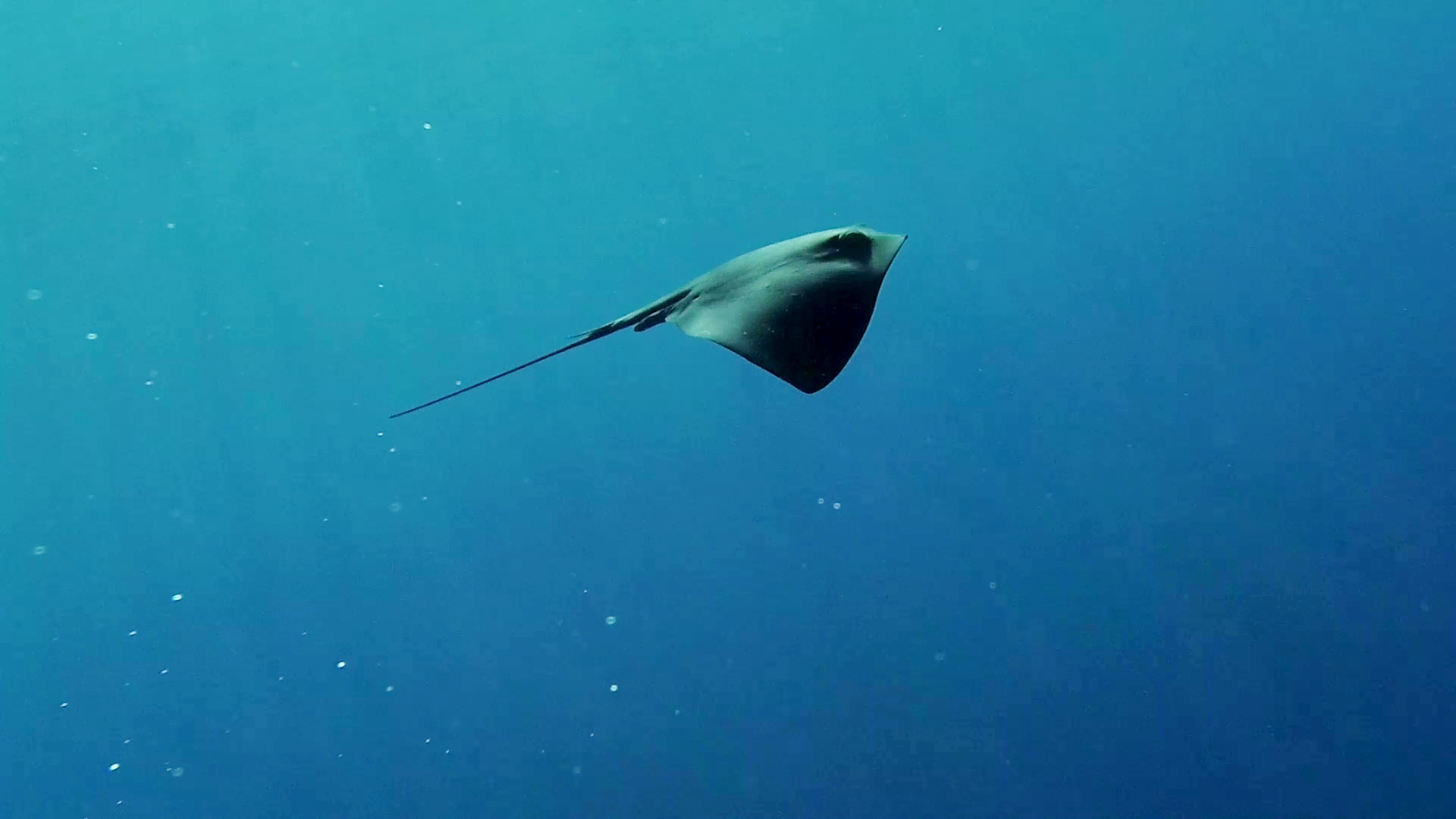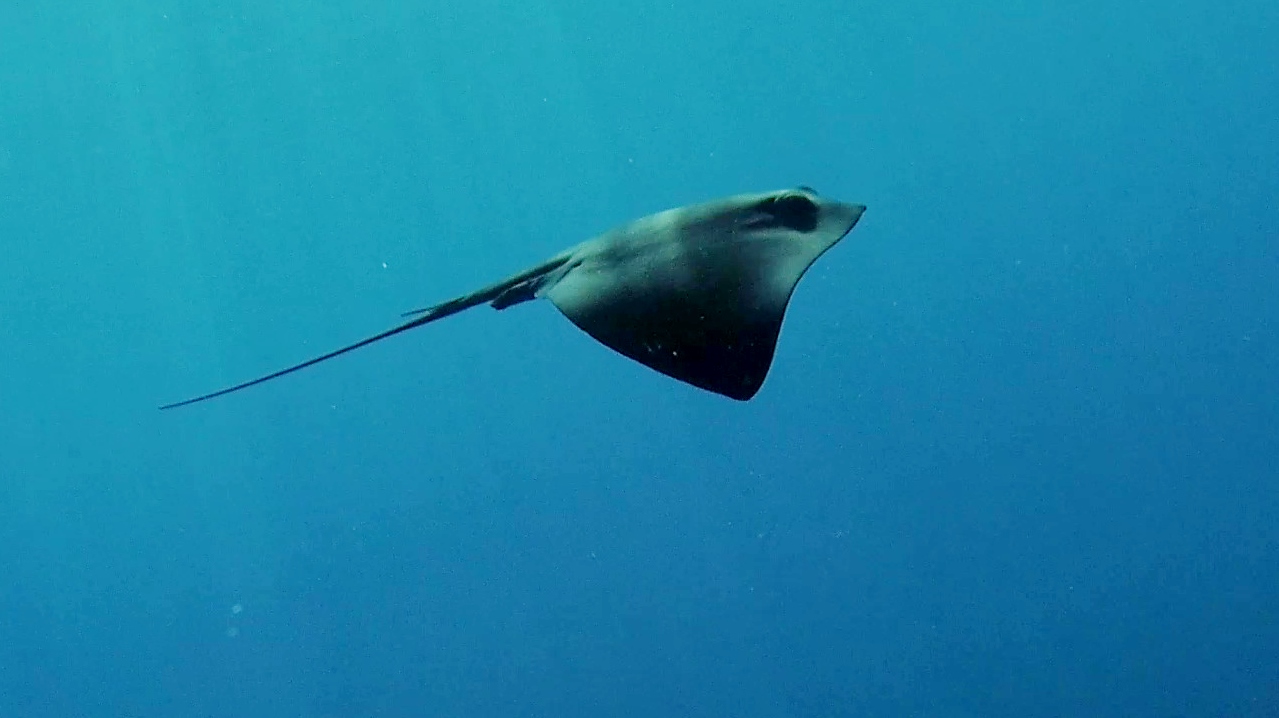Pelagic stingray - Pteroplatytrygon Violacea
Pelagic stingray, Purple trigon (Pteroplatytrygon violacea (Bonaparte, 1832)), is a fish of the family Dasyatidae, the only species of the genus Pteroplatytrygon. Trigone viola Pteroplatytrygon pastinaca violacea pelagica intotheblue.it

Description
The adult specimens can reach 160 cm in length (including the tail) and 80 cm in width. It is characterized by a very tapered discoidal body with large pectoral fins. The eyes, unlike the other stingrays, are not protruding. The mouth, located in the ventral position, has 25-34 rows of teeth on the upper jaw and 25-31 rows on the lower jaw. The teeth are formed by a pointed cusp and are suitable for cutting (unlike those of other breeds, suitable for crushing). The tail, long and similar to a whip, is endowed with one or two poisonous spines. The dorsal color varies from gray-violet to blue-green. The purple parsnip is very agile in swimming and feeds on small fishes, calamari, jellyfish and pelagic crustaceans, which pushes towards the mouth using pectoral fins.

Biology
It is an ovoviviparous species.
Distribution and habitat
Distributed in temperate and subtropical waters around the world. It prefers a pelagic habitat, exclusively off the continental shelf and far from the seabed. Trigone viola Pteroplatytrygon pastinaca violacea pelagica intotheblue.it
Dasiatids are characterized by a flat rhomboid body, with a lateral margin of the head that continues with the anterior margin of the large pectoral fins in the shape of wings. The largest species reach 4 m in length. The eyes are placed on the back, the mouth is ventral. The dorsal fin is absent or barely sketched. The tail is thin and long, and is equipped with a poisonous sting; in larger specimens, the spine can reach 35-40 centimeters in length, has a serrated profile and is covered by an epithelial sheath.
At the root of the stalk there are two poison glands that secrete a substance composed of the 5-nucleotidase and phosphodiesterase enzymes, which destroy cells, and serotonin, which causes muscle contractions. The action of this enzymatic complex is necrotizing and this is combined with the possibility of even serious bacterial infections.
https://it.wikipedia.org/wiki/Pteroplatytrygon_violacea
